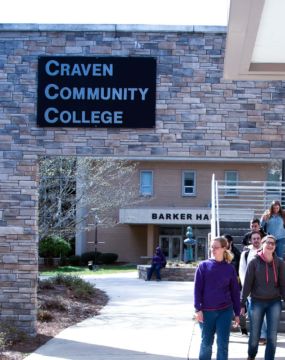Keep up with our latest demographic insights

North Carolina’s Hispanic population is nearing 1 million, with 997,000 residents in 2018. The state’s Hispanic/Latino population grew from just over 75,000 in 1990 to 800,000 in 2010. Between 2010 and 2018, the U.S. Census Bureau estimates that North Carolina’s Hispanic population grew by 197,000 new residents, an increase of 24.6%, faster than the growth of this population nationwide (18.6%). More than one in four NC Latino residents live in two counties: Mecklenburg (148K) or Wake (113K).

Each September, local community leaders gather for a comprehensive overview of the Chapel Hill-Carrboro community. Hosted by The Chamber for a Greater Chapel Hill-Carrboro, the State of the Community Report details how Chapel Hill, Carrboro, and the surrounding area are performing on various social, environmental and economic indicators. How Carolina Demography worked with the Chamber for a Greater Chapel Hill-Carrboro For the third year in a row, Carolina Demography will provide social, economic, and demographic…

Last week, we highlighted the programs of study where NC Community College graduates were making the highest average annual wages five years after graduation, as well as the percentage employed who graduated from that program. This week, we’re doing the same thing for UNC system graduates. This data comes from the NC Tower database, maintained by NC Department of Commerce, which provides aggregate information on degree attainment, programs of study, and wage/employment information from public postsecondary institutions in North Carolina. For…

One of many decisions that students transitioning from high school to postsecondary education are faced with is what program of study and credential to pursue. This can be challenging, since students are often not aware of the opportunities and salary potential associated with different careers. The NC Tower database can provide some insight into this important question. NC Tower is a web-based data delivery system, maintained by the NC Department of Commerce, which provides aggregate…

Nationally, there are 383 metropolitan statistical areas (MSA), which are defined as an economically integrated set of counties with a core central city with a population of 50,000 or more. They range in size from Carson City, Nevada (55,414) to the New York-Newark-Jersey City MSA (19,979,477) which crosses New York, New Jersey, and Pennsylvania. Within North Carolina, there are 17 unique metro regions, ranging from Goldsboro (123,248) to Charlotte-Concord-Gastonia (2,569,213 across NC and SC). With…


From 2010 to 2017, 247 North Carolina municipalities experienced population decline – approximately 45% of all cities, towns, and villages in the state. This represents an increase of 22 municipalities since last year’s population estimates were reported. After accounting for municipalities growing at a stagnant pace – below the state growth rate of 8% - this figure rises to 427 in total. This means that over three-fourths of all places are declining or growing slower…



Topline data from the Census Bureau’s recently released 2017 municipal population estimates shows little change from previous years’ estimates. Municipalities located near major metropolitan areas continue to grow, while North Carolina’s rural communities continue to experience population decline. 255 NC municipalities, or 46%, have experienced either population decline or zero-percent growth since 2010. Adding municipalities with stagnant growth – i.e. those that grew slower than the state growth rate of 8% - this totals over…


Women’s History Month has its roots in various “Women’s History Week” celebrations dating back to the late 1970s. The commemoration was often anchored to the March 8th observance of International Women’s Day. As support for the celebration grew, Congress ultimately passed a resolution recognizing March 7, 1982 as “Women’s History Week”. In 1987, this event was expanded to the entire month in perpetuity. An annual Presidential Proclamation is now issued every March to recognize the…


It’s hard to understand and process new information if we don’t have sufficient context and grounding in basic facts. A lot of what we do at Carolina Demography is help people understand the demographic facts at hand. The facts of interest are often very straightforward: how many people live in NC, where they live, how quickly populations are changing, etc. We make sure that individuals, organizations, and policy makers understand these basics so they can…
North and South Carolina have grown significantly faster than the nation since 2000, and their growth is projected to continue. This population growth has not occurred evenly across the counties, however, and the coming decade will likely show sharpening distinctions in population growth patterns. Here’s a quick look at what is projected to occur in the Carolinas during this decade (2010-2020) and what current population estimates can tell us about population growth in these states.…
Your support is critical to our mission of measuring, understanding, and predicting population change and its impact. Donate to Carolina Demography today.